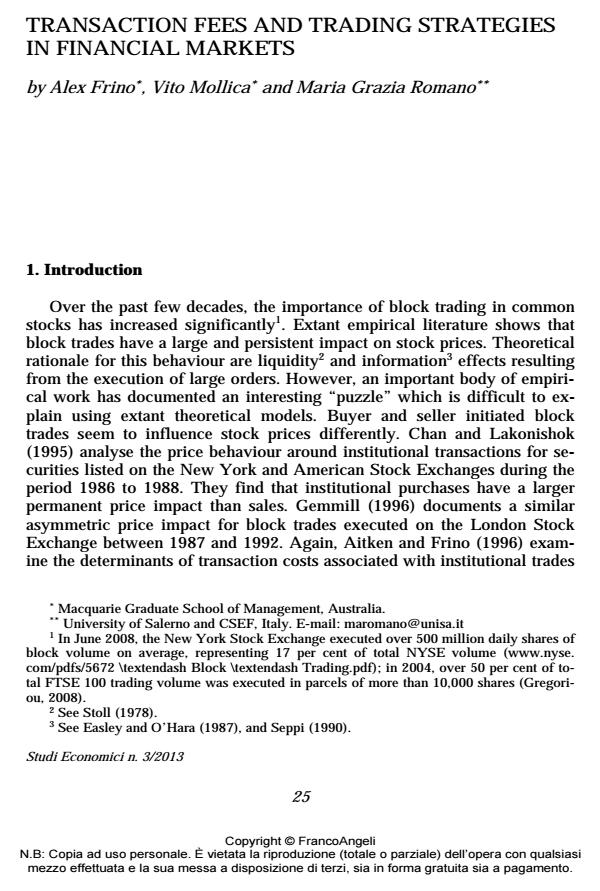Transaction Fees and Trading Strategies in Financial Markets
Journal title STUDI ECONOMICI
Author/s Alex Frino, Vito Mollica, Maria Grazia Romano
Publishing Year 2015 Issue 2013/111
Language Italian Pages 25 P. 25-49 File size 184 KB
DOI 10.3280/STE2013-111002
DOI is like a bar code for intellectual property: to have more infomation
click here
Below, you can see the article first page
If you want to buy this article in PDF format, you can do it, following the instructions to buy download credits

FrancoAngeli is member of Publishers International Linking Association, Inc (PILA), a not-for-profit association which run the CrossRef service enabling links to and from online scholarly content.
The article examines the impact of transaction costs on the trading strategy of informed institutional investors in a sequential trading market where traders can choose to transact a large or a small amount of stock. The analysis shows how the trading strategy of informed investors and the price impact of their trades depends on market conditions. The main prediction of the model is that institutional buyers are, on average, more aggressive than institutional sellers in bearish markets and less aggressive in bullish markets. Hence, the price impact is higher for purchases when market conditions are bearish, while it is higher for sales when market conditions are bullish. However, this asymmetry vanishes during strongly bearish or bullish phases, when information-based orders stop because the informational advantage of institutional investors becomes too small with respect to the transaction costs.
Keywords: Block trade, market impact, asymmetry
Jel codes: G14, G15
Alex Frino, Vito Mollica, Maria Grazia Romano, Transaction fees and trading strategies in financial markets in "STUDI ECONOMICI " 111/2013, pp 25-49, DOI: 10.3280/STE2013-111002